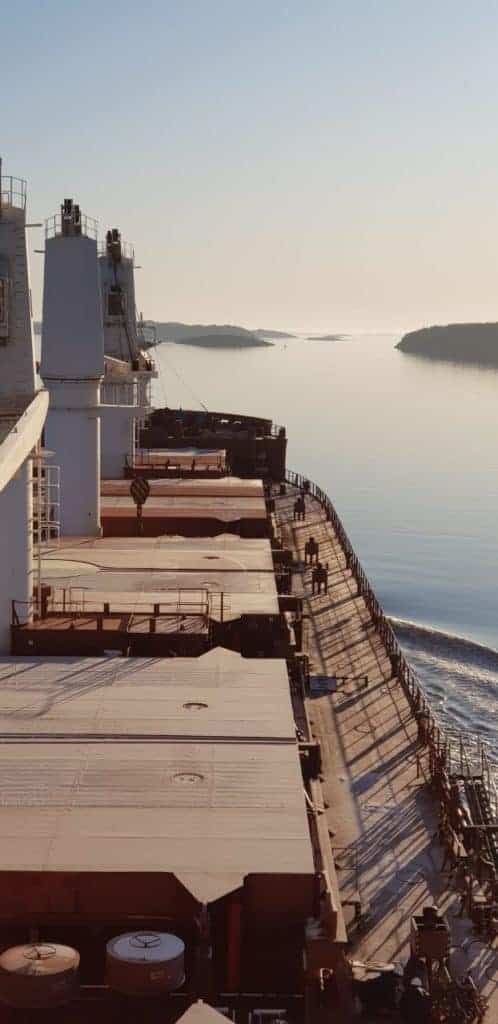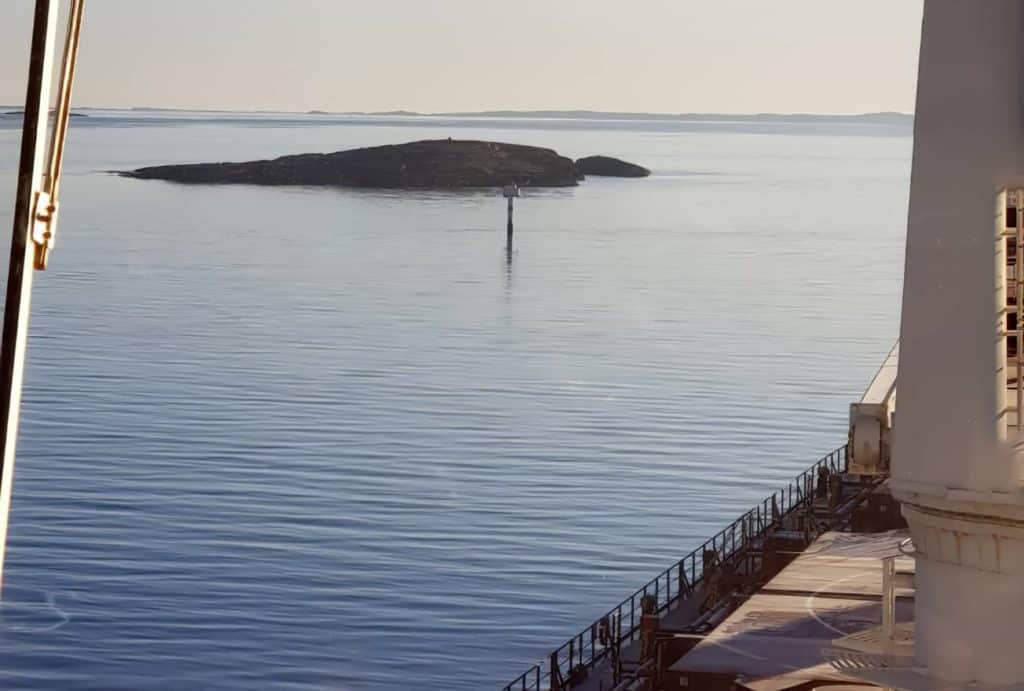The Swedish Environmental Protection Agency (NMF) on field work together with pilots
On Saturday 1 December 2019, NMF was with a pilot on board a larger cargo ship (180 meters length 30 m width, 34,000 dwt) departing from Fredrikstad.
The purpose of the fieldwork is to obtain a better basis of experience for our statements on the improvement of fairways where blasting of grounds is one of the methods.
The blasting is intended to straighten the fairway and make maneuvering the ships easier.


Narrow waters require experienced pilots
NMF has previously been on fieldwork in the harbor area of Borg harbor and followed the pilot into the Øra industrial area in Fredrikstad. On 1 December, NMF joined on board to follow one of the larger ships that traffic the area from the port. The fairway into the industrial area is relatively narrow and requires some course changes.
On 1 December the weather was beautiful, calm and good visibility. The pilot that NMF followed is well known in the area and the voyage out went according to plan.
Regulated traffic patterns reduce the risk of oil spills
Traffic is regulated according to the size of the ships that go to and from, and the largest ships are only admitted during the day due to safety and as a risk-reducing measure.
NMF has a good dialogue with the chief of staff in the Oslo Fjord and appreciates efficient dispatch that enables us to carry out field work on cases where experience and presence are important.
Pilots are important risk-reducing factors for shipping in Norwegian waters. Previous attempts by the Norwegian Coastal Administration to introduce remote piloting have been countered by the NMF and to date it has not been introduced, according to the NMF's knowledge.
NMF has previously carried out similar field work at the Sture and Mongstad terminals on larger crude oil tankers.
Few events in the Borg harbor area

There are few serious incidents in this area, but it was also here that the last major oil spill occurred when Godafoss ran aground on 17 February 2011. The grounding occurred after the pilot had left the ship. The grounding resulted in a release of several hundred tonnes of bunker oil which spread into the outer Oslofjord. The consequence for i.a. bird was serious.
After Godafoss, changes were made to when the pilot in this area was allowed to leave the ship.
NRK: At least 2,000 birds died from oil damage after the Godafoss accident




